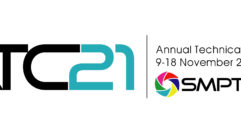Theory in Practice
Oct 1, 1998 12:00 PM,
Greg Maltz
Rapid growth in the A-V industry has quickly made managers out of thebusinessmen who had the vision to establish A-V dealer-ships and stagingand rental firms. Their companies flourished during the 1990s because ofboth industry expansion and their ability to bring business strategy tofruition by hiring, training and managing a talented, diverse staff. Thisrequires a solid understanding of the relationship between businessobjectives and human resources, and it is worth examining the hallmarks ofsuccessful management strategists in the A-V field.
Managerial experts talk about three main concerns in human resources:assuring that the business objectives are achieved, hiring the staff andmotivating them. At systems contractor firms, each of these is replete withits unique challenges. In terms of hiring, the industry has grown so fastthat there is too small of a pool of A-V professionals from which awould-be employer may draw. Fast growth, on the other hand, also makesmotivation easier because advancement tends to occur more quickly. Managershave conflicting philosophies on whether technical staff (such asinstallers) and non-technical staff (including sales personnel) should bemotivated similarly.
Managing technical and non-technical staff is also critical in theall-important first goal of management-ensuring that business objectivesare achieved. In other words, installers and sales staff must work togetherin a way that maximizes profits, but some industry observers perceive adifference in the way these two core groups are managed by their superiors.This creates a dichotomy between sales and technical human resources thatis probably the only significant impediment to flawless business in the A-Vindustry, according to Charles Klobe, an independent contractor/consultantwho was one of the founders of Integrated Media Systems, Anaheim, CA.
Business strategyWhich is more important, the sale that secures the contract or theinstallation that reflects the quality and reputation of your company?Neither should take precedence over the other, but Klobe, who stepped awayfrom IMS five years ago and now serves as a free-lance project manager,believes that upper management often tips the balance of resources in favorof the sales force. A manager’s tendency to empower sales teams overinstallers is a direct result of the manager’s preoccupation with thecompany’s business dealings.
“When I was a co-owner of IMS, I didn’t spend enough time managinginstallations in the field,” he explained. “The salesperson became theproject manager, and that may have been unwise.”
Klobe, who has the unique perspective of managing a company andsubsequently directing individual installations, sees similar problemsthroughout the industry: key decisions about installations are made bystaff who have sold the contract but may be unqualified to manage systemsintegration. This costs time, manpower and profits.
Klobe observed management’s saving $500 in shipping costs without beingsensitive to the idea that shipping delays cause installers to spend moretime at the site. In the long run, these uninformed decisions wind upcosting more than twice as much as the anticipated savings because itrequires several thousand dollars per day to have a crew at an installationsite, said Klobe. He believes that A-V system integrators would benefit byrevamping their management strategy to fit the business objectives moreclosely. One approach is to model the businesses after computer integrationcompanies like Inacom, Omaha, NE, a $4 billion-a-year company with equalweight assigned to its sales and systems integration teams.
Years ago, Inacom learned that profits are increasingly difficult to wringout of hardware and that they could make a larger margin on managing laborand systems integration. By placing the emphasis on the installation sideof the computer systems business, Inacom grew away from and ahead of retailbusinesses while previously competitive companies like Computer City becamea victim of the retail/sales game.
“Inacom’s success has relevance to A-V businesses because it provides arole model for the management of labor, and that’s where the profit is as Isee it,” Klobe said.
Proper labor management allows the salespeople to make the sale, theintegrators to develop the system, and the customers to receive thegreatest value for their money. This type of systems integration cannot runsmoothly with the sales team controlling installations.
Klobe said, “Providing equal weight to the technical staff and the salesteams is probably the most important business approach to help systemcontractors move forward.”
So how do A-V project managers implement that strategy and improve theirbusiness decisions? It entails understanding installations well enough toproject costs accurately, forecast delays and delegate responsibility tothe installers.
“Managers should get back out and spend time at installation sites,” Klobesaid. “They should empathize equally with technical staff and salesspecialists; the contract is for completing the installation, not justgetting the client to sign the sales contract.”
Possibly the most important key to managing an installation is planning andbeing realistic. “Experienced project managers take advantage of databasesthat document the history of projects installed in the past,” he continued.”Salespeople don’t necessarily have access to this information or may notunderstand the planning and estimation involved.”
Incorrect planning can wreak havoc on budgets. For example, specialequipment required for an installation is often charged to that specificjob when it should be rented or budgeted differently because the equipmentwill be useful for future installations. Klobe has observed “too muchinaccurate planning for projects,” sometimes as serious as assuming aninstallation would take six months when it took closer to a year.
This type of miscalculation causes not only problems with the client, butalso a great rift between sales personnel (who often delegate resources injobs they have secured) and technical staff (who see firsthand therequirements of the installation). This rift can manifest itself as asuits-vs.-dirty-clothes mentality that Klobe has observed in the industry.He does not see the two sides warring, but the division is there, and heacknowledges that even managers with the best intentions can exacerbate thedichotomy of power as he did at IMS by not spending enough time withinstallers in the field and by taking their concerns with a grain of salt.
Motivating staffOther factors play a role in the rift. Sales staff paid on commission arenot motivated in the same way as installers who are paid hourly, accordingto some A-V industry managers. Installers can take great pride in thequality of the system, but only if they are given the proper physical andeducational tools to do the job effectively.
“If they feel confident, the installation will be done right the firsttime,” Klobe said. “Don’t tell them to install a projector on the ceilingand just give them a ladder. Give them the specific tools they need toinstall system components and complete the project.”
The resources will more likely be made available with less hassle if salesstaff and installers are managed so that they become more sensitive to eachother. Even though techies are a breed different from sales/customerservice staff, some managers, like Pete Cunningham of American High TechRentals, Houston, use similar strategies for hiring and motivating them.
“Everyone [at American High Tech Rentals] is treated equally,” he said.”Everyone is on a salary.”
This sets American High Tech Rentals aside from traditional businesses thatreward sales staff with commission, but Cunningham explains that it isimportant to manage non-technical employees on equal terms because theirjobs are no more or less demanding or important than those of technicalstaff. This also discourages the suits-vs.-dirty-clothes mentality.
American High Tech Rentals has approximately seven employees running itscustomer service department, which handles more than 12 phone lines. Thestaff places shipments, takes orders and addresses other customer issuesefficiently. The customer service staff has developed a rotating system inwhich there is a different lead person for the department who assumes extraresponsibility.
“They rotate [the lead position] so no one gets burned out,” Cunninghamsaid. “The department gets a very heavy stream of phone calls, yet even inthe absence of management, customer service runs like a Swiss watch.”
Cunningham explains that the only way to assure that the department willkeep running on its own is by empowering his staff. Employees like those inHigh Tech Rentals’ customer service department assume responsibility onlywhen managers give them the latitude to direct themselves. One of the bestphilosophies of human resource specialists is to make everyone aself-directed staff member.
Managers should communicate to their workers the importance of their job,specifically how critical each position is to the overall success of thecompany. How does each position affect the others? This should be brokendown and communicated clearly to every new employee so that they understandthey are part of a team and feel inspired to do their best.
“Motivation can also be improved by a bonus program in which employeesreceive a portion of the profits at the end of each year,” Cunningham added.
One factor working in management’s favor is that technical andnon-technical staff alike will be motivated by the growth of the companyand of the industry as a whole. Nearly 96% of A-V dealers in the UnitedStates and Canada expect a 22% increase in gross revenues through the endof 1998, according to the International Communications IndustriesAssociation’s 1998 Benefits Report.
“This is the best economy I’ve seen in the 20 years I’ve been in business,”said long-time industry observer Martin Schaffel, president and CEO ofAudio Visual Innovations (AVI), Tampa, FL. “It makes it easier to recruitand train good people, provide a good wage, a quality environment and acause to be associated with.”
Companies that manufacture A-V products are also enjoying the warm economicclimate, but they too face the challenges of keeping pace with the rapidgrowth of the industry while maintaining top-notch service to meet theircustomers’ technical support demands. Extron Electronics, Anaheim, CA, amanufacturer of computer-video interfaces, switching and distributionproducts, has a human resources approach similar to many of the A-V dealerswhom they serve. Growth in the industry is seen not only as a motivationalforce, but also as a way to help Extron’s technical employees diversify andbe more creative.
“The fact that the industry changes so rapidly makes our jobs interesting,”explains Dave Pincek, vice president of product development at Extron.”With new display, computer and video/broadcast technologies evolving sorapidly, it is exciting to find where an employee’s interest lies and lethim specialize in that.”
Hiring staffFor young companies, philosophy about motivation may be premature becausetheir primary concern is bringing staff on board. Companies in the A-Vindustry tend to start out small-very small. The story has been repeateddozens of times with surprisingly strong similarities. Typically, it beginswith a one- or two-man operation working out of a private residence or tinyoffice, which transforms into a multimillion dollar business.
One good example of this expansion story is AVI. The company started in1979 with Schaffel working out of his apartment. New businesses in asimilar situation should take note of his approach to human resources. Ithelped AVI grow from a $3 million company to a $60 million company in thelast 10 years. AVI now has 120 employees, and the staff is expected toreach 175 by year’s end.
In the beginning, Schaffel was careful to hire close personal contacts.When the company expanded and Schaffel needed to interview strangers, adswere run in local newspapers. Trade schools and universities were alsocontacted.
“We were able to take people with the best attitude possible and trainthem, even if they lacked formal training,” Schaffel said.
Although training is essential once the right people have come aboard,finding someone with a good attitude is the key to finding good employees.
“Where the employees come from is never as important as why they arehired,” Schaffel explained. He described the qualities he is looking for as”the exuberance to learn a new technology and work well with others withinthe company and the industry.”
When it comes to hiring, many successful managers view technical andnon-technical personnel the same; good attitude is still the desired trait.Why adopt this philosophy if the workloads for these individuals will be sodifferent? Part of the reason is because the consensus among human resourcespecialists is that it is much harder to teach someone a good attitude thana new technology. Ideally, you can find people with the right training andthe right attitude, but unemployment is at an all-time low, and companiesare no longer able to wait for the right candidate. If you must choosebetween good training and good attitude, you are much better off in thelong run to hire someone with a good attitude.
Of course, this does not mean attitude is the only quality to look for.There are sure-fire ways to hire people with technical knowledge. PeteCunningham tries to bring aboard technically proficient staff by developingcontacts at local universities. This can be difficult because universitieswant to establish relationships with huge corporations that will hire largenumbers of graduates. Trade schools like ITT Technical Institute may be thebest place to find prospective engineers.
“I used to work for General Electric, and I recruited from universities,”Cunningham said. “The doors to four-year college job placement offices wereopen all the time. But GE is obviously very big, and we’re much smaller, sonow it’s difficult. Our relationship with trade schools is good, andrecruitment works out well.”
Manufacturers in the A-V industry use similar tactics to find newemployees. Jeff Gibson, national sales manager at Extron, looks for peoplewith strong customer support skills, not necessarily technical gurus orcandidates with extensive A-V experience.
“Think about the service businesses that provide the best customersupport,” he said. “Our staff comes from many of those companies. We don’thave salespeople here-we hire service specialists who can help ourcustomers. Extron’s philosophy is, ‘we don’t sell anything-we educate andprovide solutions.'” The focus on education is necessary in a rapidlychanging industry.
Mandi Speer, Extron’s national sales manager who shares managerial dutieswith Gibson, stated, “In-house training is an absolute necessity to preparestaff for the technical issues and, more importantly, to keep the vision ofthe company and the team concept in front of us all.”
Training is also an opportunity for management to show its commitment toemployees so that they, in turn, show greater commitment to the company.The time and other resources spent on training do pay off, she said. “Taketime,” she advised. “Don’t rush when it comes to instilling in your staffthe company vision and technical issues. Otherwise, your clients are theones who will suffer.”
At Extron’s headquarters, new employees are extensively trained for six tonine months before beginning phone support. Once they start taking calls,support staff are able to answer most customer questions without consultingExtron’s application engineers, according to Speer. Training certainlyeducates and empowers staff, but the benefit to the customer may be theultimate endorsement of in-house training.
Whether your business is in manufacturing electronic devices or installingcustom security systems, the rules are the same. The companies that thriveunderstand business, but they also understand people-how to hire, motivate,educate and support them. The network of employees working in the A-Vindustry is clearly the foundation on which the future of the industrygrows. Managers must make it a strong foundation.










